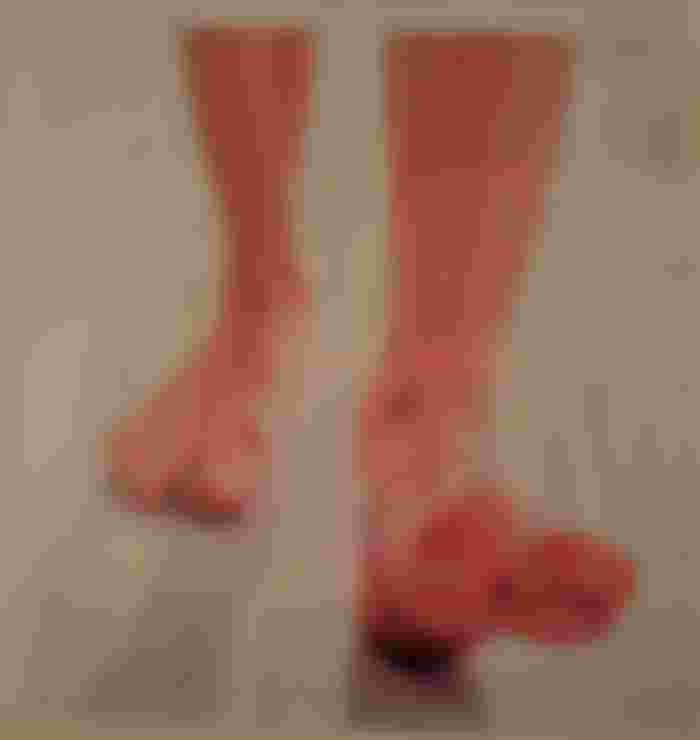The answer to the question we asked in the title is easy. We mostly have problems with our knees, shoulders, hips, and fists, and we forget our feet until we have problems that allow us to walk normally.
Then we limp, walk on our toes, or on one side of our feet. We try to reduce the problems by massaging the feet, we try to rest them, until the problems are so strong that we call the doctor to help us.
During the summer, with high temperatures, you may not expect to get feet pain that will limit the quality of your life with burning of that place and pain as well. Trying to help himself, the patient finds it difficult to walk, changes his shoes. Of course, at the same time, he changes gels and compresses locally at the place of pain, until the difficulties are so great that they restrict movement, and they he calls the doctor.
Why do some feet problems occur more often in summer?
The increased occurrence of pain in the summer is primarily because we change our shoes in the summer, that is, we decide to wear completely flat shoes or walk around the house without them. If we walk in flat shoes, and we have hallux valgus, there is pain in the root of the thumb, redness of the skin, swelling of the thumb joint, and the patient has a subjective impression that the position of the thumb has changed significantly. Patients who have bruises and who occasionally have problems during the year, in a large percentage also have flat soles. So, by walking on a flat surface, the front arch of the feet falls, the position of the big toe changes, and due to the existence of a bunion, the condition worsens. So, bunion appear as a problem when the patient calls doctor to help.

Prevention
We need to teach the patient what to d to prevent this from happening ant to know that is the prevention of this phenomenon:
First - it is mandatory to wear separators that are placed between the first and second thumb and which have the goal of correcting the deformation and position of the thumb in relation to the second finger;
Second - we locally recommend rubbing cold gels or cryotherapy for five to ten minutes, after which you should wipe the application site and gently rub some of the cooling gels.
If the redness is expressed in combination with pain, the patient should contact a physiatrist who will prescribe therapy and calm the process in a few days.
It is important that patients understand that they need to help themselves, primary by wearing appropriate footwear, maintaining the correction of the position of the thumb and other toe, and regularly taking care about type of physical activity they perform, if prescribed by a doctor.
Of course, one number has to operate bunions, both for aesthetic and functional reasons.
Pain in the root of the fingers
A common problem in the summer months is the appearance of pain in the root of the third and second toe, when the patient has to stop walking due to the pain, often takes off his shoes, massages the root of the toes and continues until new pain appears. This is about the existence of Morton's neuroma.
The main symptoms of Morton's neuroma are sudden pain, burning, both toes of the feet and of the front of the feet, at the root of second and third toe. The pain intensifies with increased physical activity, with walking, running and wearing tight shoes or shoes with high heels. The toes are very numb, and the onset of pain can last from a minutes to a full hour.
It is characteristic of this disease that there isn't night pain, as well as that the examination of the feet doesn't show visible signs of changes. When the patient or doctor palpates the place in the root of the second and third toe, the patient reacts with strong pain to the touch.
If the described pain lasts for several days and if it still exists, even though we gave up high heels, changed shoes and reduced physical activity, it is necessary for the patient to contact a doctor who will diagnose the existence of Morton's neuroma. The doctor will determine which diagnostic procedure should be undertaken to determine the existence of Morton's neuroma.
How to treat Morton's neuroma
First of all, by changing shoes, as well as reducing physical activity. Physical therapy is purposed and gives good results. It is important that the patient receives some of the non-steroidal and anti-rheumatic drugs to reduce pain, as well as local treatment of cold gels at the beginning of treatment, and in chronic cases some of the rheumatic gels.
Alternatively, locally, the patient may get a blockage. The operations didn't always give good results.
It is important that when the problem pass, that the patient takes custom-made insoles, has a comfortable shoe and that the exercise program works as prescribed by the physiatrist. Also, it is important to respect opinion of the doctor about returning to physical activities, so that the problems not recur.
Images and literature: Lily magazine, number 38, fall 2019
